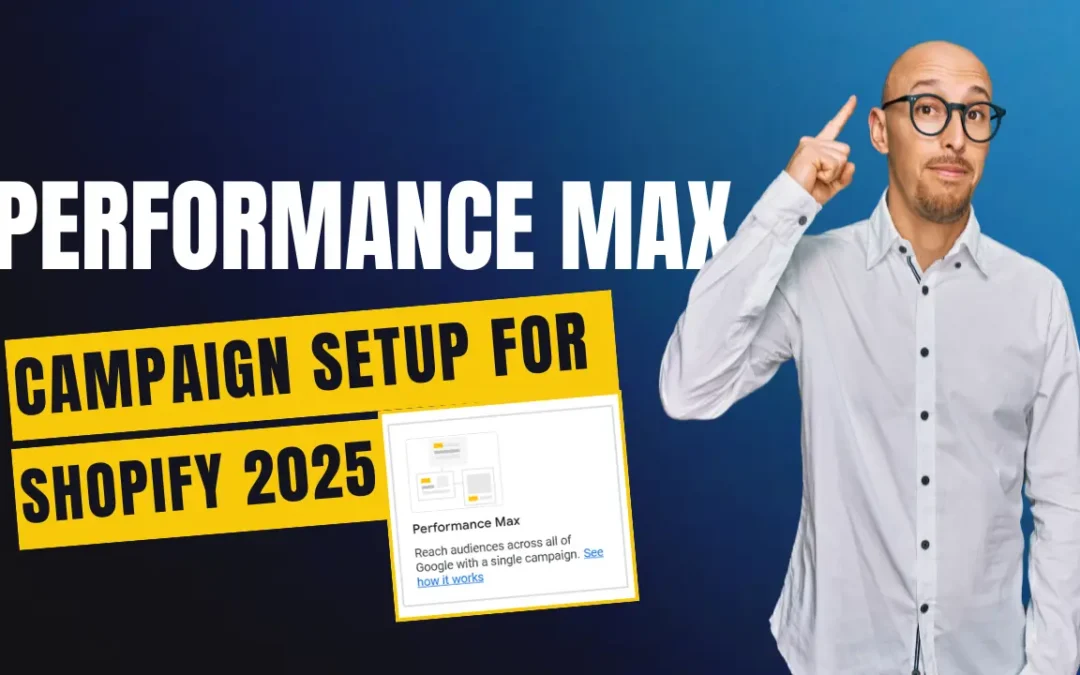PMax is Google’s AI-driven, all-in-one campaign type that places your ads across all of Google’s channels—YouTube, Display, Search, Discover, Gmail, and Maps. Setting it up correctly is the key to unlocking incredible results.
Ready to build your most effective campaign yet? Let’s get started.
Step 1: Campaign Creation and Objective
First things first, log into your Google Ads account.
- Click the big blue ‘+’ button and select ‘New campaign’.
- Choose your campaign objective. This tells Google what you want to achieve. For most businesses, this will be ‘Sales’ or ‘Leads’.
- Ensure your conversion goals are properly set up. PMax relies heavily on accurate conversion data to learn and optimize.
- Select ‘Performance Max’ as your campaign type.
- Finally, give your campaign a clear, descriptive name (e.g.,
PMax - Fall Collection - 2025).
Step 2: Budget and Bidding Strategy
Now, let’s talk about your investment.
- Budget: Enter the average amount you’re comfortable spending per day.
- Bidding: You have two main choices.
- Maximize conversions: Choose this if you want to generate the highest number of leads or sales. You can set an optional Target CPA (Cost Per Acquisition).
- Maximize conversion value: This is ideal for e-commerce stores with varied product prices. It tells Google’s AI to find customers who are likely to spend more. You can set an optional Target ROAS (Return on Ad Spend).
Pro Tip: When launching a new campaign, it’s often best to leave the Target CPA or ROAS fields blank for the first few weeks to allow the algorithm to gather data without constraints.
Step 3: Core Campaign Settings
These settings help refine where and how your ads are shown.
- Locations and Languages: Be specific. Target only the regions and languages relevant to your business.
- Final URL expansion: Keep this feature turned ON. It allows Google to send users to the most relevant landing page on your site based on their search intent. You can, however, exclude specific URLs you don’t want to serve as landing pages, like your policy or career pages.
Step 4: Building Your Asset Group
This is the creative heart of your campaign. An asset group is a collection of images, videos, and text that Google’s AI will mix and match to create ads for different channels.
Give your asset group a specific name (e.g., Women's Running Shoes). Then, provide as many high-quality assets as possible:
- Images: Up to 20 high-resolution images.
- Logos: Up to 5 versions of your company logo.
- Videos: Up to 5 videos. This is crucial! If you don’t provide a video, Google will create a basic slideshow for you. Always upload your own.
- Headlines & Long Headlines: Fill out all available slots with compelling, benefit-driven text.
- Descriptions: Write clear and concise descriptions of your offer.
- Call to Action: Choose the most relevant option (e.g., ‘Shop Now’, ‘Learn More’).
- Business Name: Add your brand name.
Step 5: Adding Audience Signals
An audience signal is not strict targeting; it’s a powerful hint you give to Google’s AI about who your ideal customer is. This helps the machine learning find the right people faster.
Focus on providing two main types of signals:
- Your Data: Upload your customer lists and add your website visitor data (remarketing lists), especially ‘past purchasers’. This is your most valuable data.
- Custom Segments: Create a segment of users who have recently searched for specific keywords on Google. Think like your customer and list 10-15 of your most important search terms.
Step 6: Final Assets & Launch
We’re on the home stretch!
- Assets (formerly Extensions): Add as many relevant assets as you can. At a minimum, include Sitelinks (links to other pages on your site) and Callouts (short snippets of text highlighting benefits like “Free Shipping”). These make your ads larger and more informative.
- Review and Publish: Look over the campaign summary to double-check all your settings. If everything looks good, hit that ‘Publish campaign’ button!
What’s Next? Be Patient!
Your PMax campaign is now live, but the work isn’t over. It will enter a “learning phase” for a few weeks. During this time, the algorithm is gathering data and learning who to show your ads to. Avoid making significant changes during this period.
After a few weeks, you can start optimizing by reviewing the performance of your different assets in the asset group and swapping out any that are underperforming.
By following these steps, you’ve created a powerful, well-structured Performance Max campaign ready to drive results for your business in 2025.

